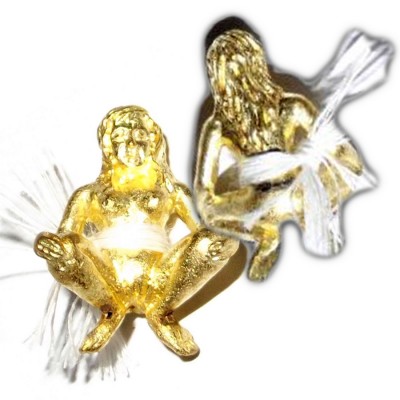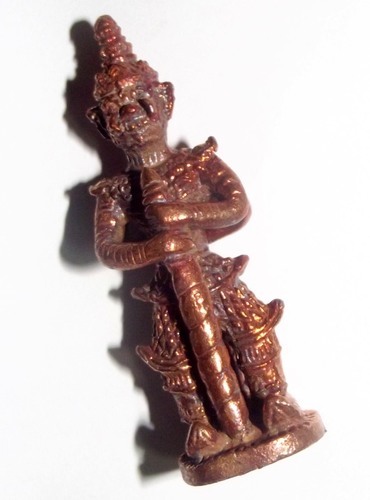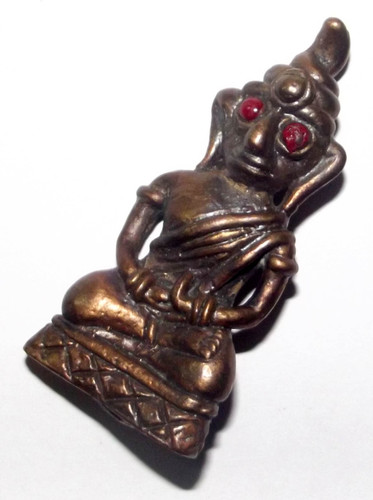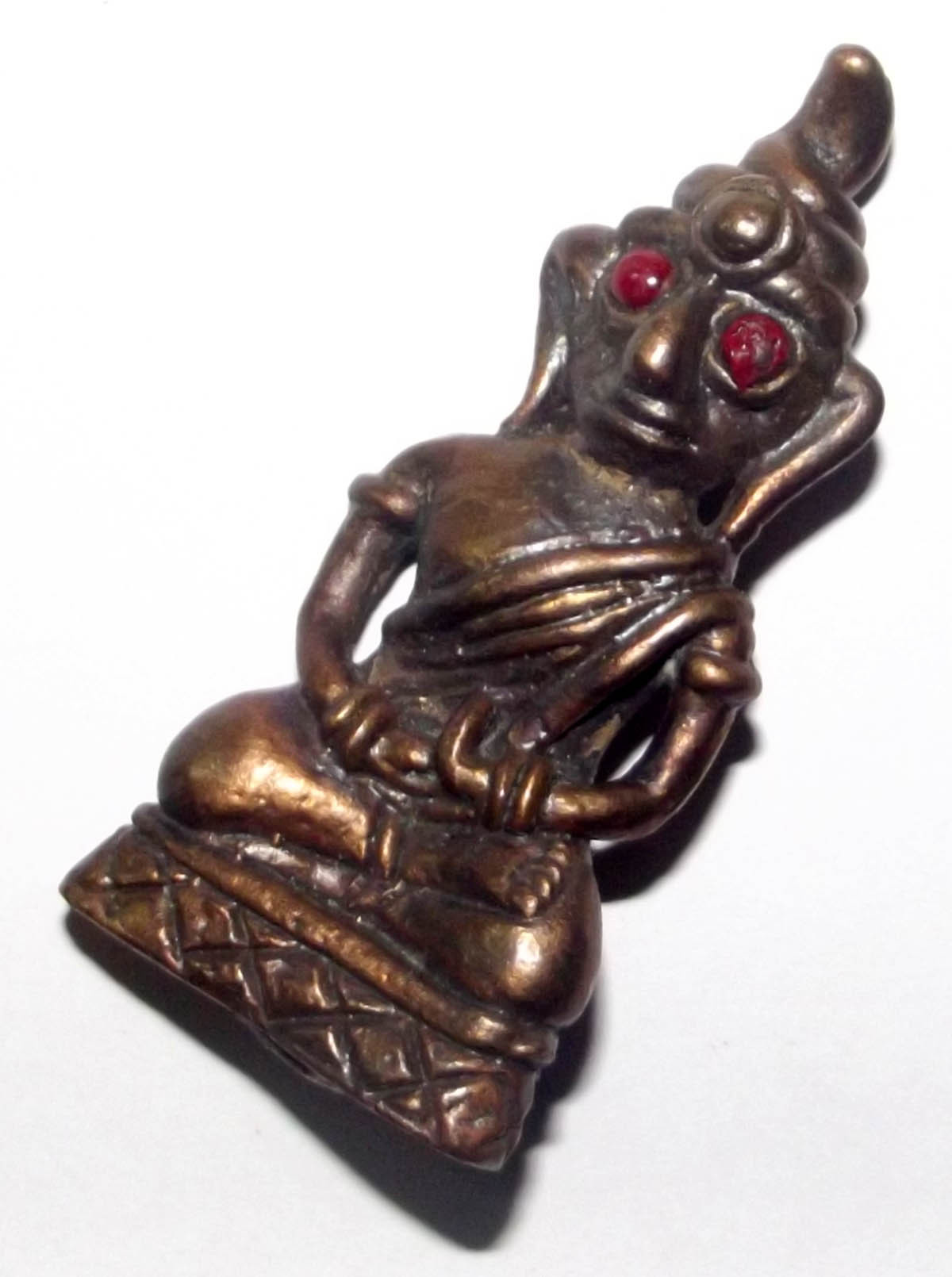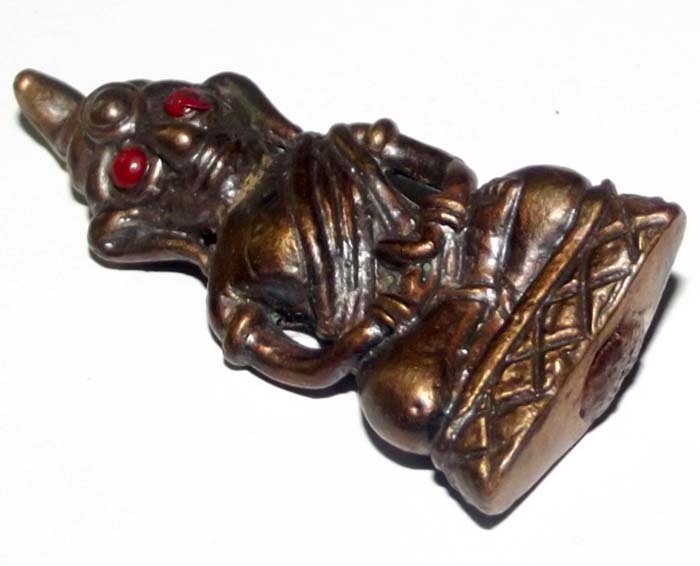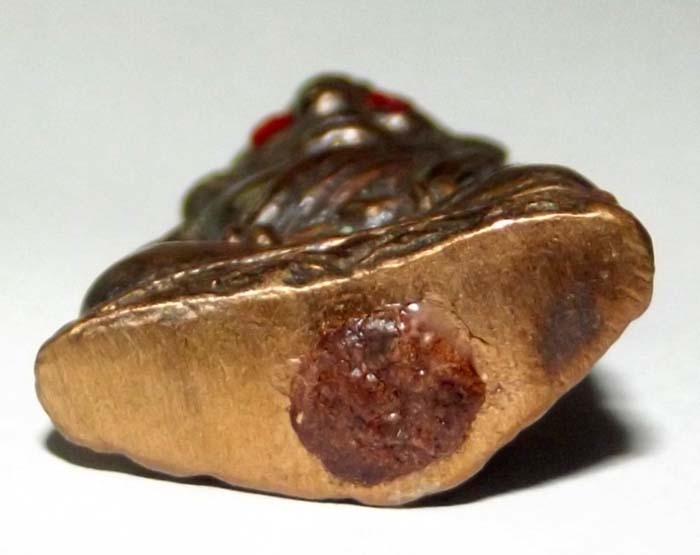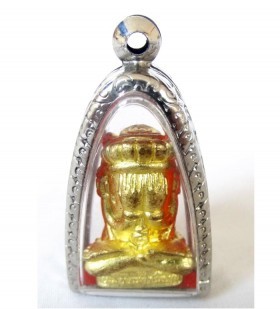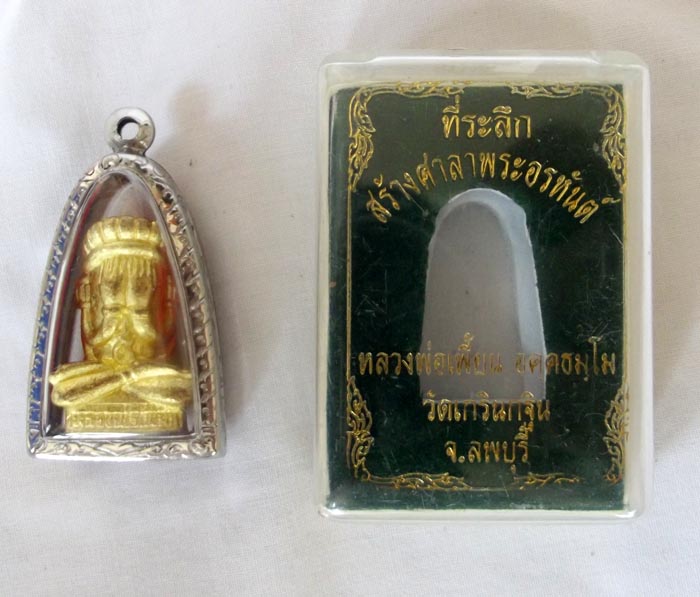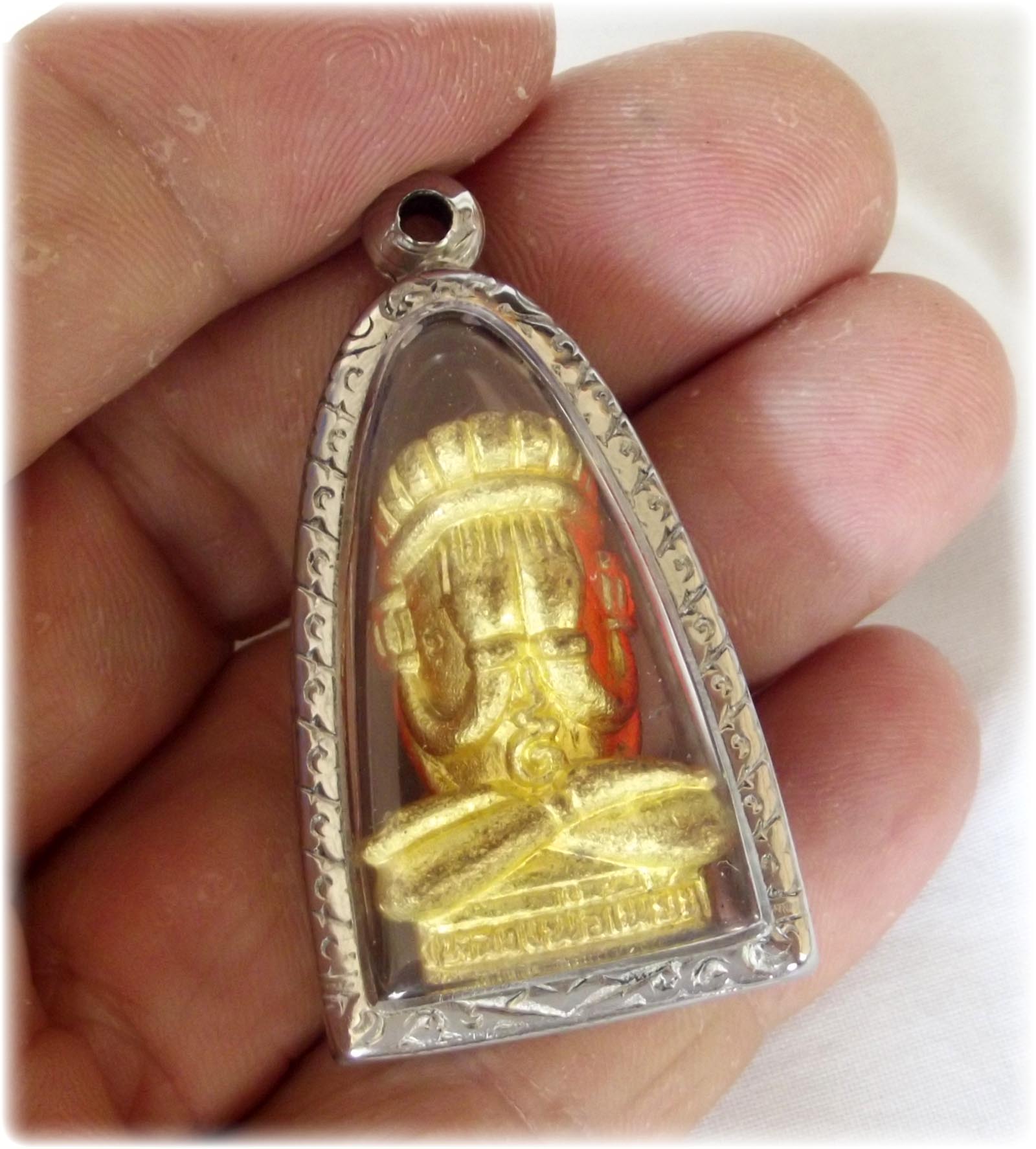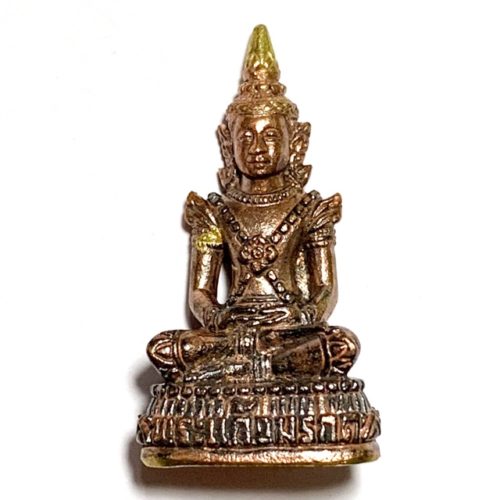
Special Gammagarn Version of the Pra Kring Gaew Morakot Luang Phu Moon Tidtasilo Wat Ban Jan (Yorn Yuk Edition Emerald Buddha of LP Moon). A special ‘Pra Kring’ type Loi Ongk Statuette in Nuea Maha Chanuan Sacred Alchemical Alloy with Brass Base and Kring Bead rattle inserted, sealed with a Look Namo Slug with Sacred Agkhara U on the Base). Only 561 amulets were made in this particular version, and only handed out during the ceremony to devotees. The Pra Kring, should bring 12 kinds of blessings to the devotee who wears it, bestowed through the rattling Kring bead within the Pra Kring Medicine Buddha.
This edition was released at Wat Weluwan in Buddha Abhiseka presided over by Luang Por Udom Sap, with extra blessings thereafter by great masters of the Luang Phu Moon Lineage, to raise funds for the building of the necessary facilities for the Samnak Songk Pha None Mueang temple, in Roi Et in the Isan Country, which is presided over by Pra Ajarn Luang Por Chalerm Rat Aruno.


Free Registered Airmail Shipping Worldwide is Included with this amulet. The Samnak Songk Pha None Mueang is in dire need of funds, and so the devotees in collaboration with the temple of Wat Weluwan in Sri Saket, arranged for this edition to be made. The amulets were made in various types of sacred metals, as well as some sacred powder versions. These special version ‘Maha Chanuan’ alchemicaal metal amulets were made in extreme limited edition of 561 amulets, and were handed out to sponsors and devotees during the ceremony only, and not issued for general distribution.

The metallic Loi Ongk Pra Gaew Morakot statuettes were made in the following numbers 1. Nuea Ngern (solid silver) – 111 amulets made 2. Nuea Nava Loha (9 sacred metals) – 1,111 amulets made 3. Nuea Tong Rakang Ud Pong Wan Puttakun (Sacred Temple Bell brass filled with herbal Powders and Puttakun Powders)- 3,111 amulets made 4. Nuea Lek nam Pi (Lek Lai maekasit related alchemical metal substance, only handed out to pre-order donation devotees) – 561 amulets made. In addition, some votive tablets in sacred muan sarn powders were also released.
Below; Sacred Look Namo insert, with Khom Agkhara “U” Yantra and Series Number Code Stamps are embossed on the brass base of the amulet, which has a Kring Bead rattle inserted within the inner chamber

The edition was blessed in 2561 BE, at the temple of Wat Weluwan in Buddha Abhiseka. For indeed, the temple of Wat Pha None Mueang is yet to have an Uposatha Shrineroom to perform Buddha Abhisekha Ceremonies, and so was needed for this purpose.
The amulets were blessed With Luang Por Chalerm Rat and Monks of the Luang Phu Moon (Hmun) Wat Ban Jan Lineage, including the great Luang Por Porn Chai, of the Samnak Songk Siri Taep Sangworn.
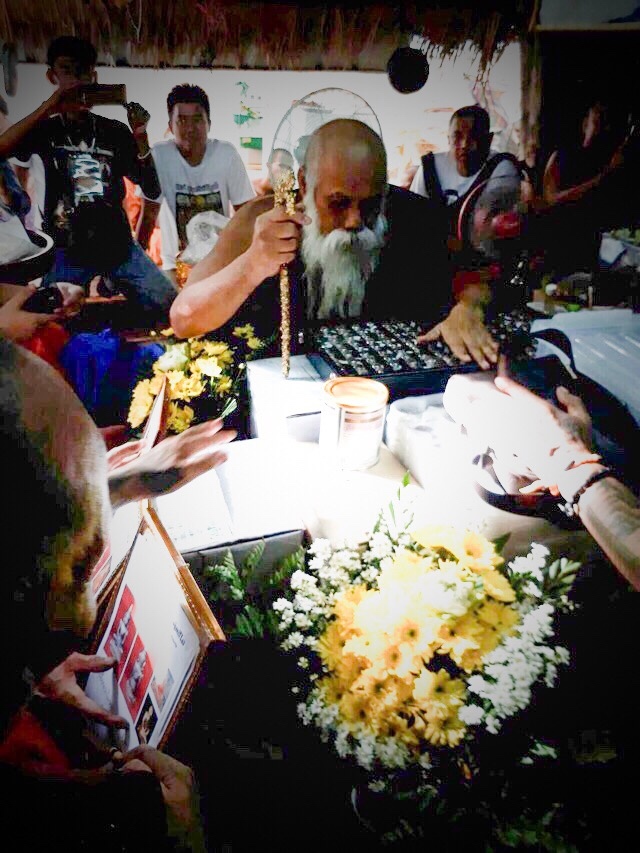

This version is a Pra Kring, and hence invoked with the Healing powers of the Bhaisajyaguru, 藥師佛 Yàoshīfó, in Chinese, or in Japanese ‘Yakushi’). Bhaisajyaguru is of course, the Medicine Buddha.. The use of the Pra Kring amulet as an object of veneration for this particular commemoration is with the intent of bestowing miraculous protection and healing powers of the Medicine Buddha to the devotee, with Serm Duang power for auspicious Karma, and as Buddhanussati (Mindfulness of the Buddha).
Below; Luang Por Porn Chai Puttasaro, Luang Por Chalerm Rat, and Masters of the LP Hmun (Moon) Wat Ban Jan Lineage blessing the Pra Gaew Morakot Emerald Buddha Statuettes for the 2561 fundraiser edition to build a temple at Samnak Songk Pha None Mueang in Roi Et.
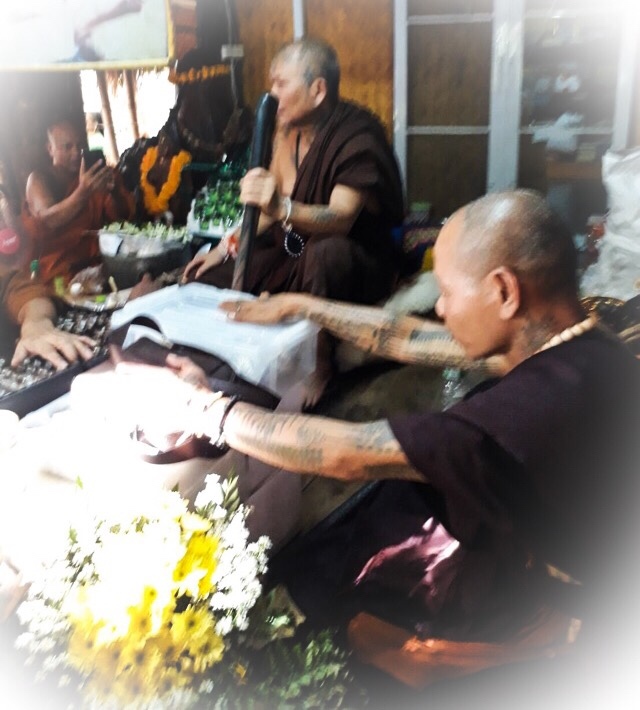
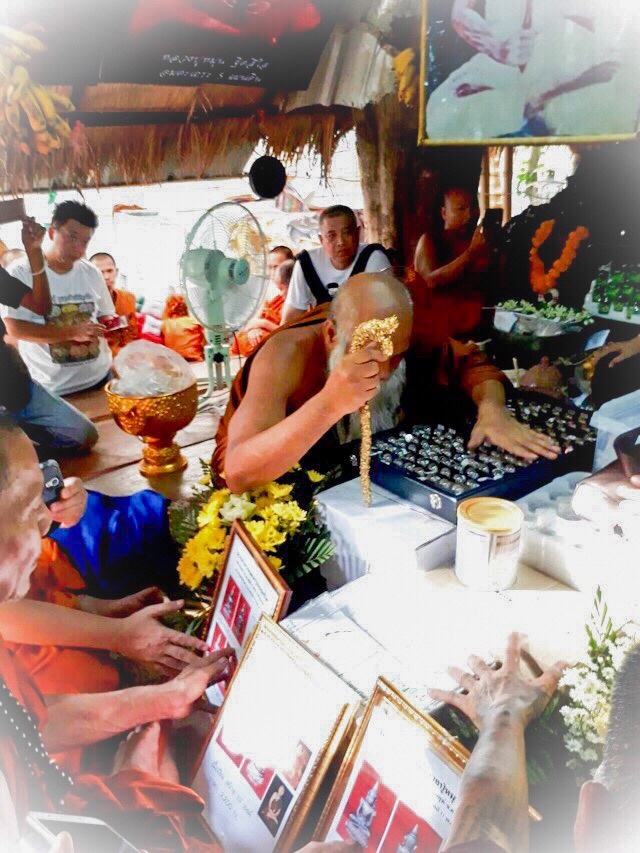
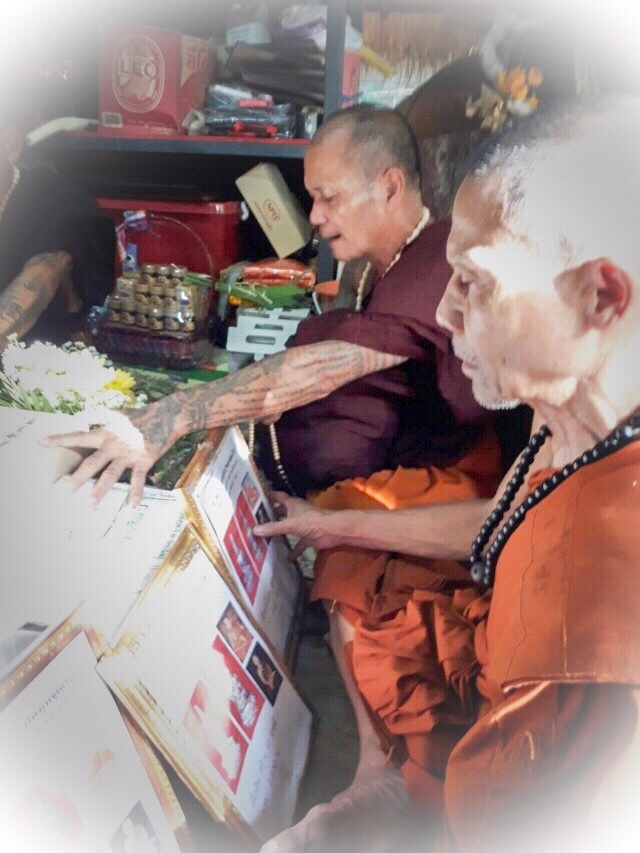

Below; Devotees assist in the preparation of the building of the foundations of the Samnak Songk Pha None Mueang, slowly but surely, as funds from donations permit.
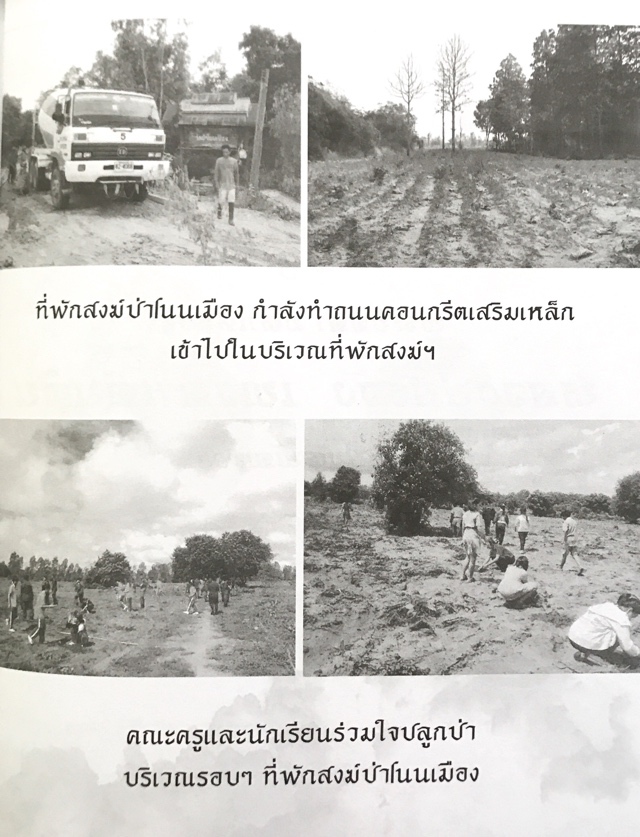

The Emerald Buddha amulets are made in the style of the Emerald Buddha statue found within the Royal Palace within the shrineroom of Wat Pra Gaew (Temple of the Emerald Buddha). The original statue is fashioned Pre Chiang Saen to Early Chiang Saen Era, estimated sometime around the year 500 BE. It was given the name Pra Putta Radtana Pan Mani Morakot.

The Emerald Buddha is considered the palladium of the Kingdom of Thailand. It is a figurine of the meditating Buddha seated in yogic posture, made of a semi-precious green stone (jade or jasper rather than emerald), clothed in gold, and about 26 inches (66 cm) tall.[4] It is housed in the Temple of the Emerald Buddha (Wat Pra Gaew) on the grounds of the Grand Palace in Bangkok (Wikipedia). It is considered to have healing qualities by Thai Buddhist People. Early in the Bangkok period, the Emerald Buddha used to be taken out of its temple and paraded in the streets to relieve the city and countryside of various calamities (such as plague and cholera).

The Emerald Buddha also marks the changing of the seasons in Thailand, with the king presiding over seasonal ceremonies. In a ritual held at the temple three times a year, the dress of the deity is changed at the start of each of the three seasons. The astrological dates for the ritual ceremonies, at the changing of the seasons, followed are in the first waning moon of the lunar calendar, months 4, 8 and 12 (around March, July, and November). Rama I initiated this ritual for the hot season and the rainy season; Rama III introduced the ritual for the winter season. The robes which adorn the image, represent those of monks and the king, depending on the season, an indication of its symbolic role “as Buddha and the King”, which role is also enjoined on the Thai king who formally dresses the Emerald Buddha image.
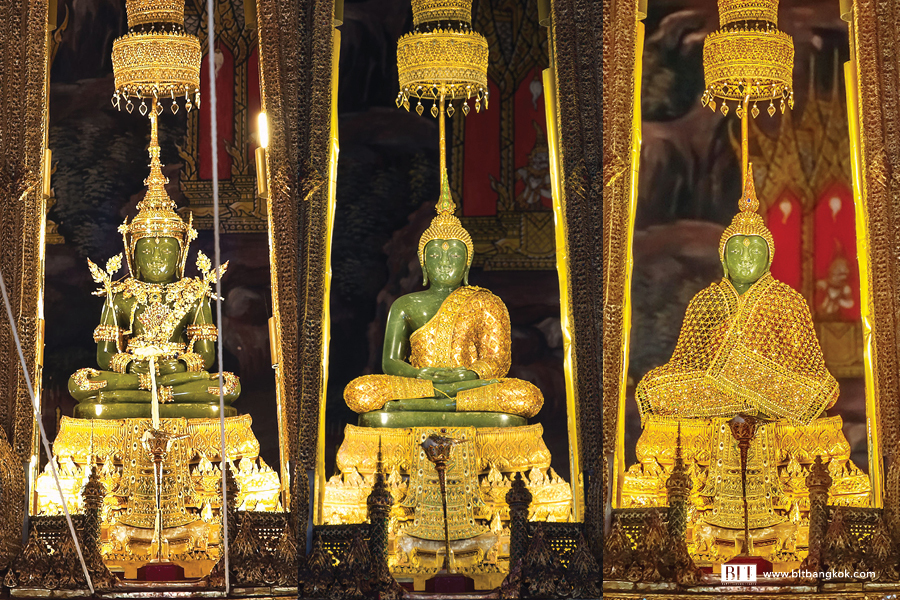
The costume change ritual is performed by the Thai king who is the most elevated master of ceremonies for all Buddhist rites. During the ceremony, the king first climbs up to the pedestal, cleans the image by wiping away any dust, and changes the gold headdress of the Emerald Buddha. The king then worships nearby while an attendant performs the elaborate ritual of changing garments. The king also sprays holy water upon his subjects waiting outside the ordination hall, a privilege previously afforded only to the princes and officials who were attending the ceremony inside the ubosoth (the shrineroom where Uposatha is held.

Below Luang Por Chalerm Rat Aruno, of Samnak Songk Pha None Mueang, in Roi Et
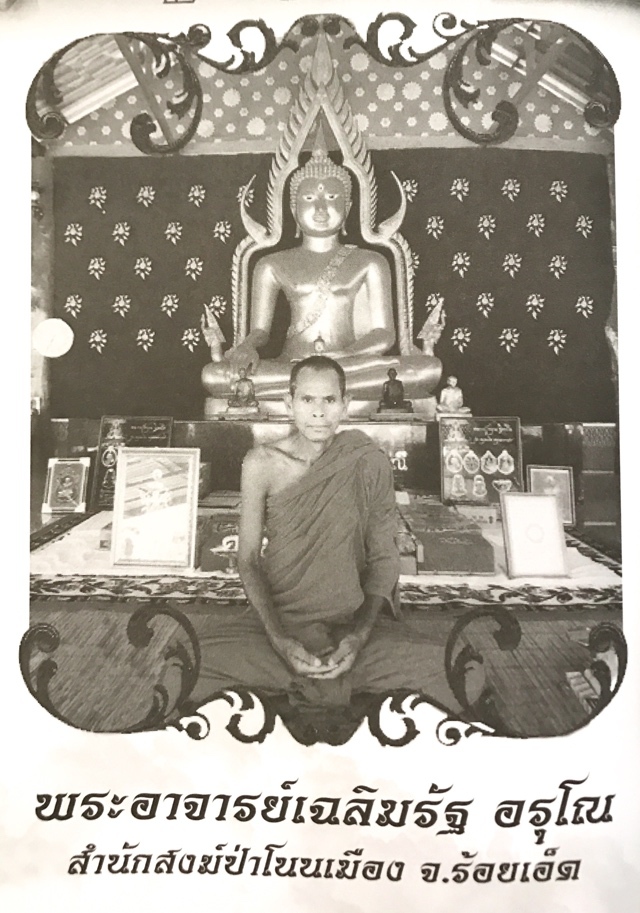

This edition was released at Wat Weluwan in Buddha Abhiseka presided over by Luang Por Udom Sap, with extra blessings thereafter by great masters of the Luang Phu Moon Lineage, to raise funds for the building of the necessary facilities for the Samnak Songk Pha None Mueang temple, in Roi Et in the Isan Country, which is presided over by Pra Ajarn Luang Por Chalerm Rat Aruno.


Free Registered Airmail Shipping Worldwide is Included with this amulet. The Samnak Songk Pha None Mueang is in dire need of funds, and so the devotees in collaboration with the temple of Wat Weluwan in Sri Saket, arranged for this edition to be made. The amulets were made in various types of sacred metals, as well as some sacred powder versions. These special version ‘Maha Chanuan’ alchemicaal metal amulets were made in extreme limited edition of 561 amulets, and were handed out to sponsors and devotees during the ceremony only, and not issued for general distribution.

The metallic Loi Ongk Pra Gaew Morakot statuettes were made in the following numbers 1. Nuea Ngern (solid silver) – 111 amulets made 2. Nuea Nava Loha (9 sacred metals) – 1,111 amulets made 3. Nuea Tong Rakang Ud Pong Wan Puttakun (Sacred Temple Bell brass filled with herbal Powders and Puttakun Powders)- 3,111 amulets made 4. Nuea Lek nam Pi (Lek Lai maekasit related alchemical metal substance, only handed out to pre-order donation devotees) – 561 amulets made. In addition, some votive tablets in sacred muan sarn powders were also released.
Below; Sacred Look Namo insert, with Khom Agkhara “U” Yantra and Series Number Code Stamps are embossed on the brass base of the amulet, which has a Kring Bead rattle inserted within the inner chamber

The edition was blessed in 2561 BE, at the temple of Wat Weluwan in Buddha Abhiseka. For indeed, the temple of Wat Pha None Mueang is yet to have an Uposatha Shrineroom to perform Buddha Abhisekha Ceremonies, and so was needed for this purpose.
The amulets were blessed With Luang Por Chalerm Rat and Monks of the Luang Phu Moon (Hmun) Wat Ban Jan Lineage, including the great Luang Por Porn Chai, of the Samnak Songk Siri Taep Sangworn.


This version is a Pra Kring, and hence invoked with the Healing powers of the Bhaisajyaguru, 藥師佛 Yàoshīfó, in Chinese, or in Japanese ‘Yakushi’). Bhaisajyaguru is of course, the Medicine Buddha.. The use of the Pra Kring amulet as an object of veneration for this particular commemoration is with the intent of bestowing miraculous protection and healing powers of the Medicine Buddha to the devotee, with Serm Duang power for auspicious Karma, and as Buddhanussati (Mindfulness of the Buddha).
Below; Luang Por Porn Chai Puttasaro, Luang Por Chalerm Rat, and Masters of the LP Hmun (Moon) Wat Ban Jan Lineage blessing the Pra Gaew Morakot Emerald Buddha Statuettes for the 2561 fundraiser edition to build a temple at Samnak Songk Pha None Mueang in Roi Et.




Below; Devotees assist in the preparation of the building of the foundations of the Samnak Songk Pha None Mueang, slowly but surely, as funds from donations permit.


The Emerald Buddha amulets are made in the style of the Emerald Buddha statue found within the Royal Palace within the shrineroom of Wat Pra Gaew (Temple of the Emerald Buddha). The original statue is fashioned Pre Chiang Saen to Early Chiang Saen Era, estimated sometime around the year 500 BE. It was given the name Pra Putta Radtana Pan Mani Morakot.

The Emerald Buddha is considered the palladium of the Kingdom of Thailand. It is a figurine of the meditating Buddha seated in yogic posture, made of a semi-precious green stone (jade or jasper rather than emerald), clothed in gold, and about 26 inches (66 cm) tall.[4] It is housed in the Temple of the Emerald Buddha (Wat Pra Gaew) on the grounds of the Grand Palace in Bangkok (Wikipedia). It is considered to have healing qualities by Thai Buddhist People. Early in the Bangkok period, the Emerald Buddha used to be taken out of its temple and paraded in the streets to relieve the city and countryside of various calamities (such as plague and cholera).

The Emerald Buddha also marks the changing of the seasons in Thailand, with the king presiding over seasonal ceremonies. In a ritual held at the temple three times a year, the dress of the deity is changed at the start of each of the three seasons. The astrological dates for the ritual ceremonies, at the changing of the seasons, followed are in the first waning moon of the lunar calendar, months 4, 8 and 12 (around March, July, and November). Rama I initiated this ritual for the hot season and the rainy season; Rama III introduced the ritual for the winter season. The robes which adorn the image, represent those of monks and the king, depending on the season, an indication of its symbolic role “as Buddha and the King”, which role is also enjoined on the Thai king who formally dresses the Emerald Buddha image.

The costume change ritual is performed by the Thai king who is the most elevated master of ceremonies for all Buddhist rites. During the ceremony, the king first climbs up to the pedestal, cleans the image by wiping away any dust, and changes the gold headdress of the Emerald Buddha. The king then worships nearby while an attendant performs the elaborate ritual of changing garments. The king also sprays holy water upon his subjects waiting outside the ordination hall, a privilege previously afforded only to the princes and officials who were attending the ceremony inside the ubosoth (the shrineroom where Uposatha is held.

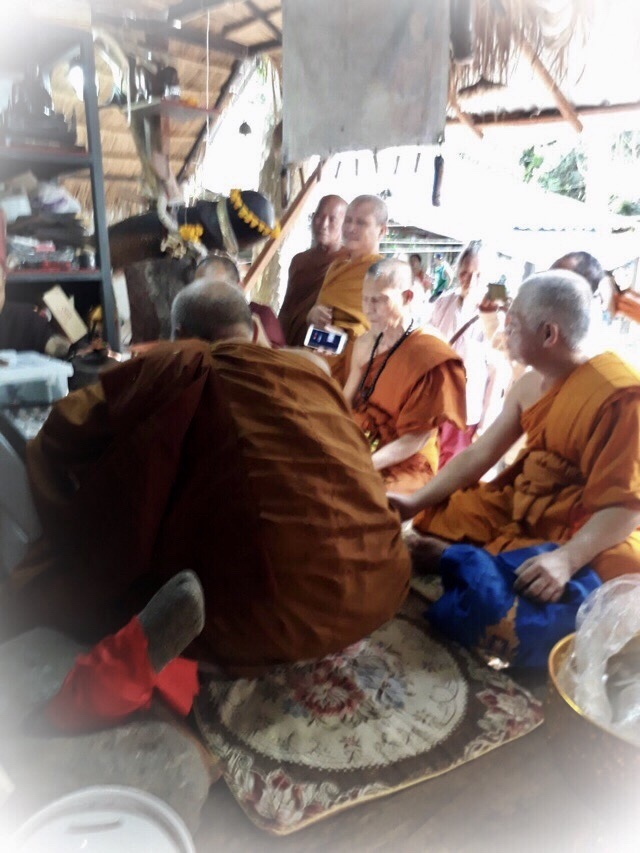
Below Luang Por Chalerm Rat Aruno, of Samnak Songk Pha None Mueang, in Roi Et



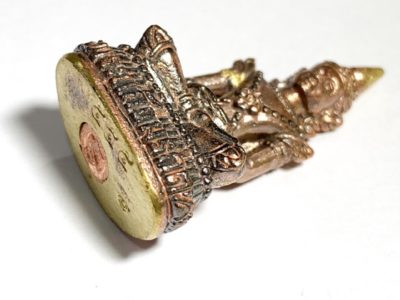
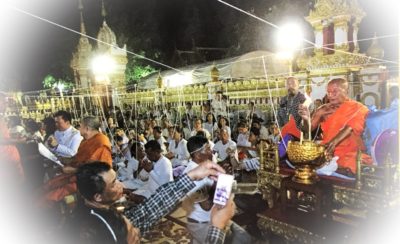
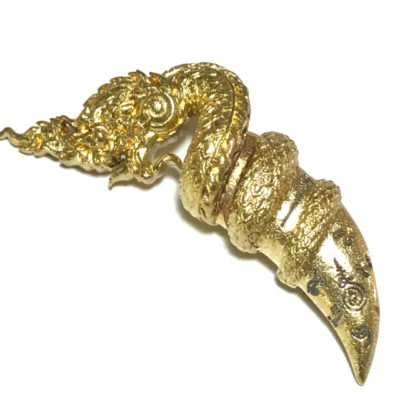
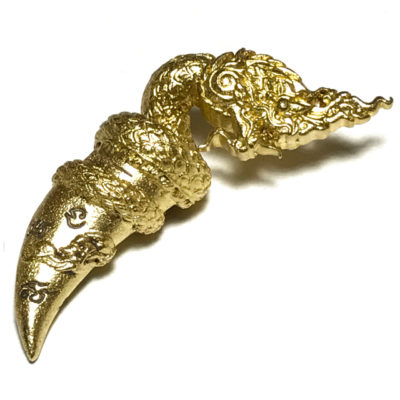
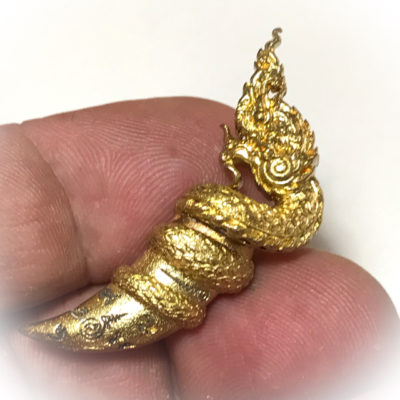
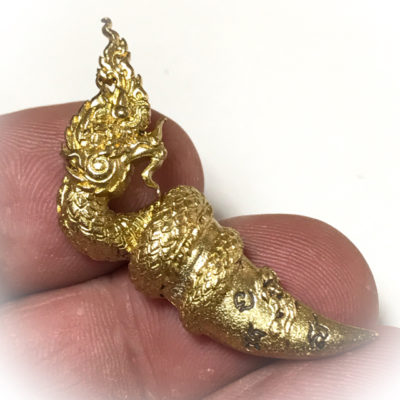
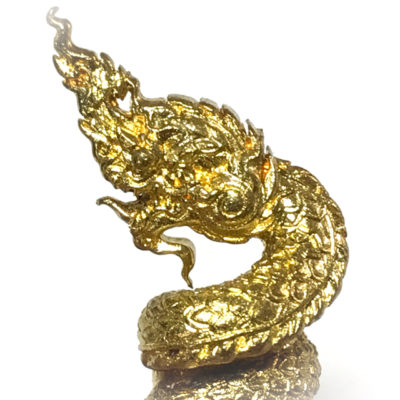
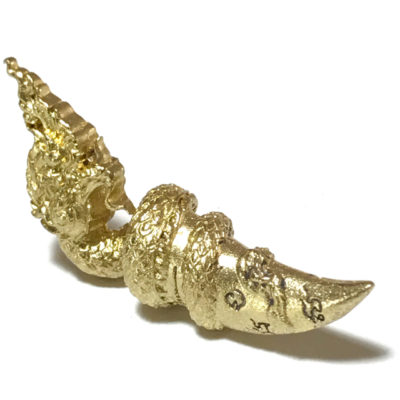
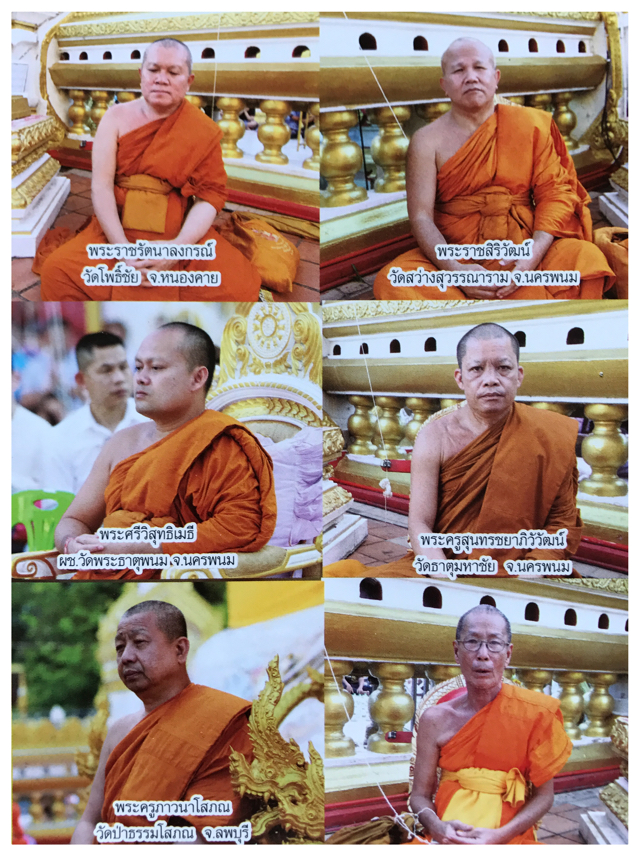
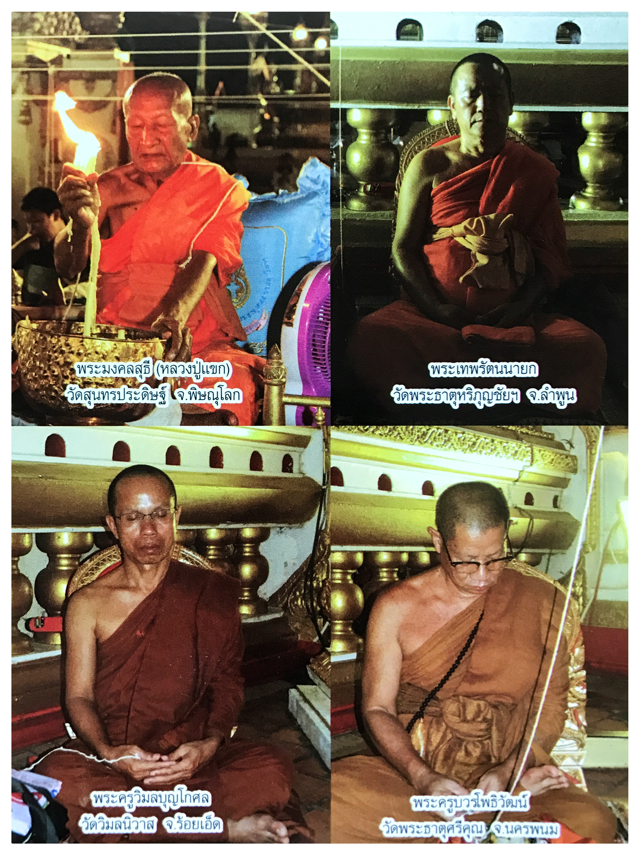
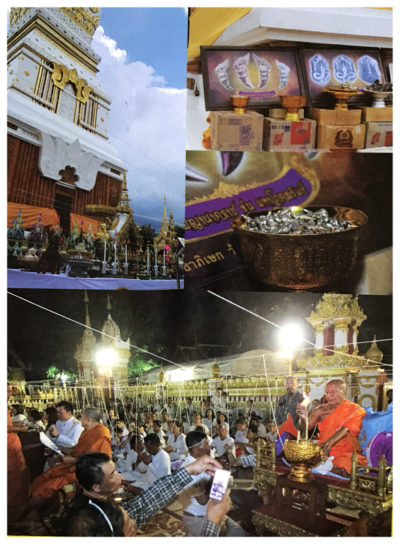
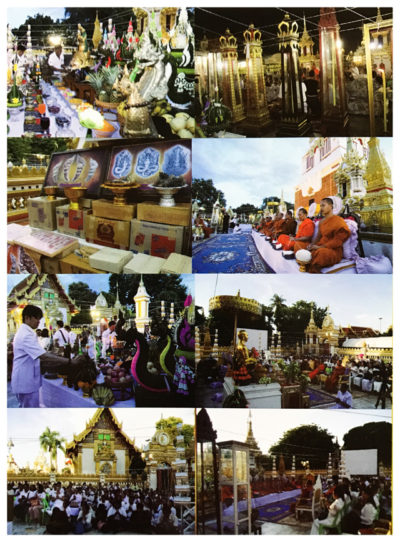
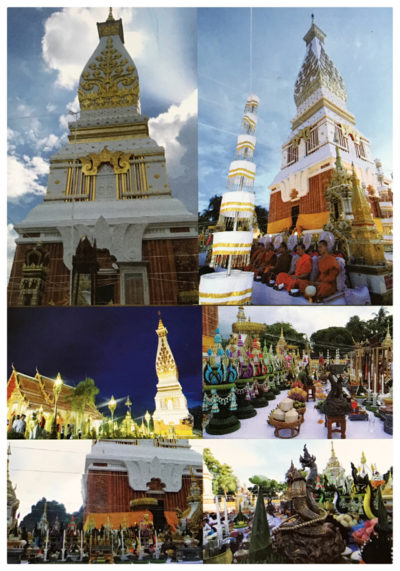
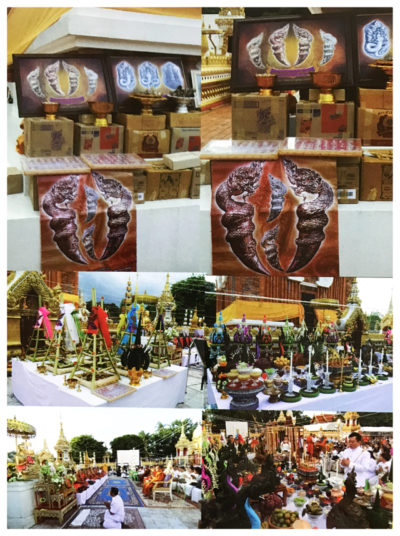
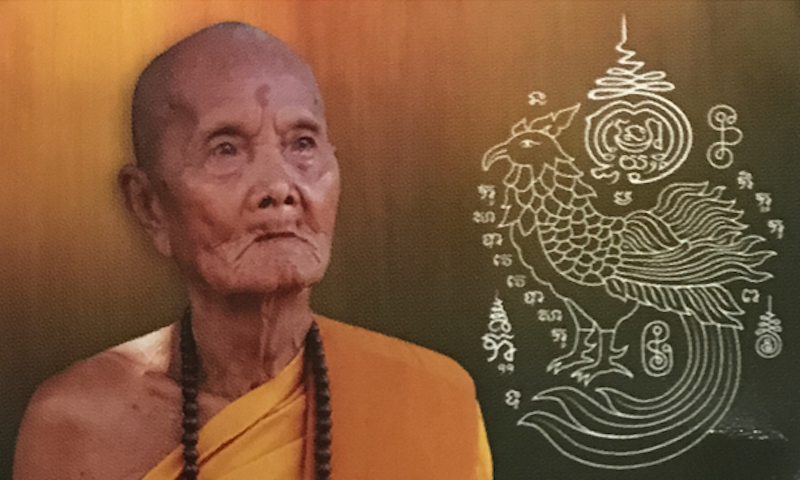
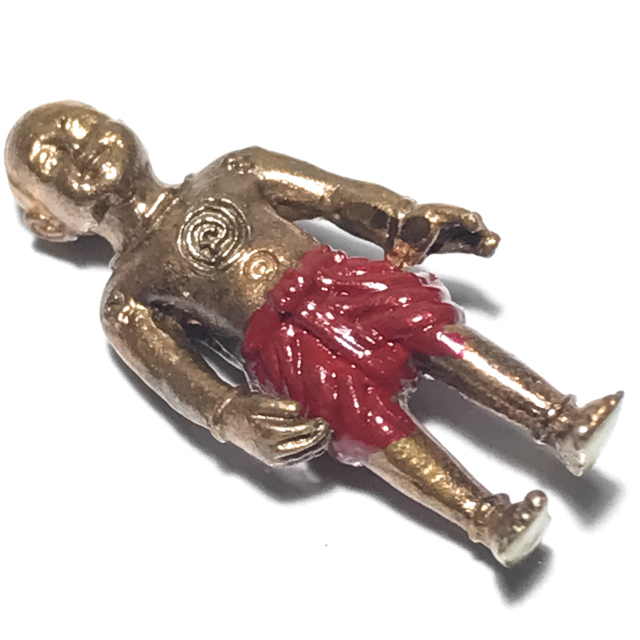
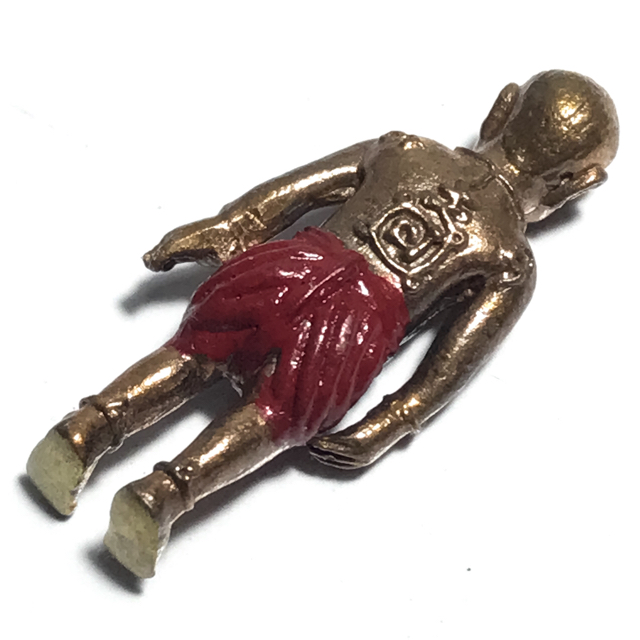
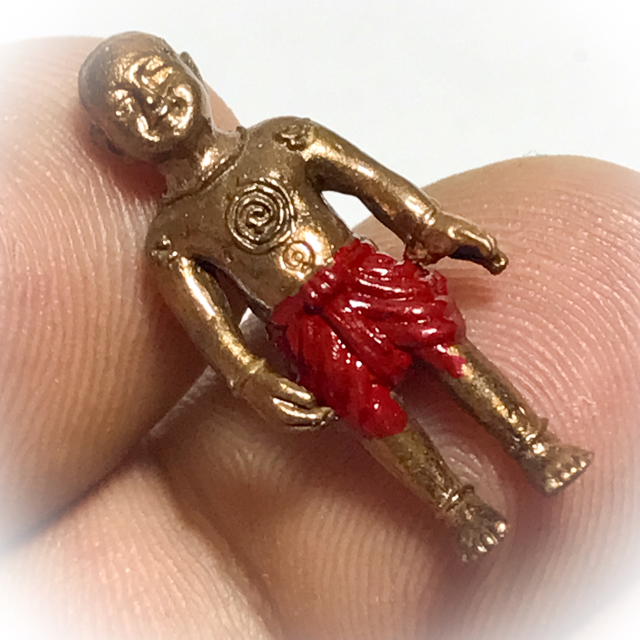
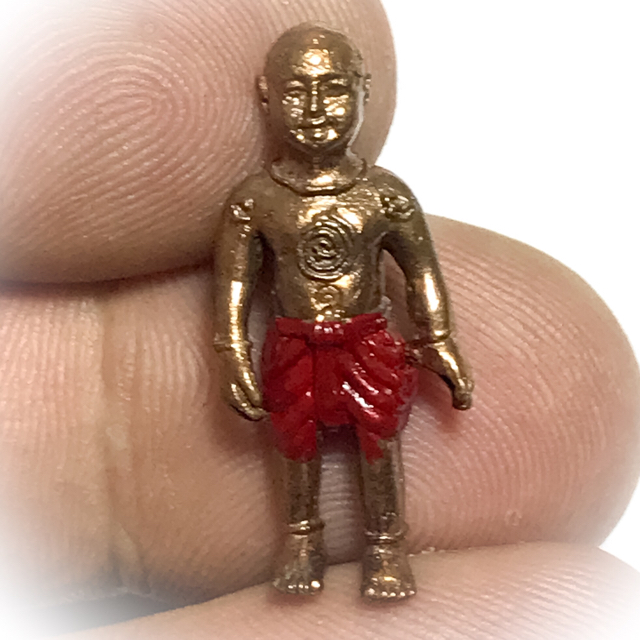
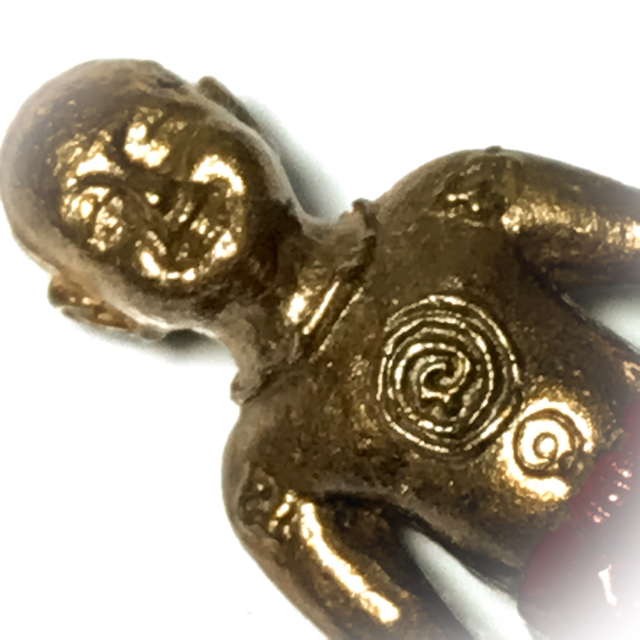
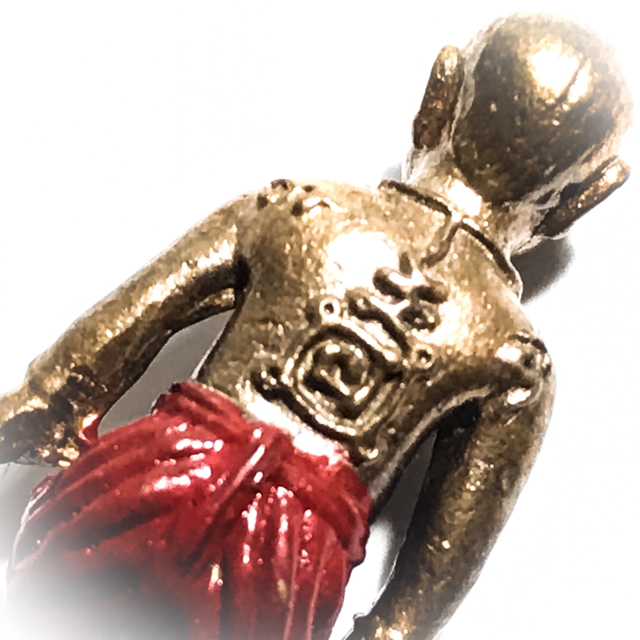
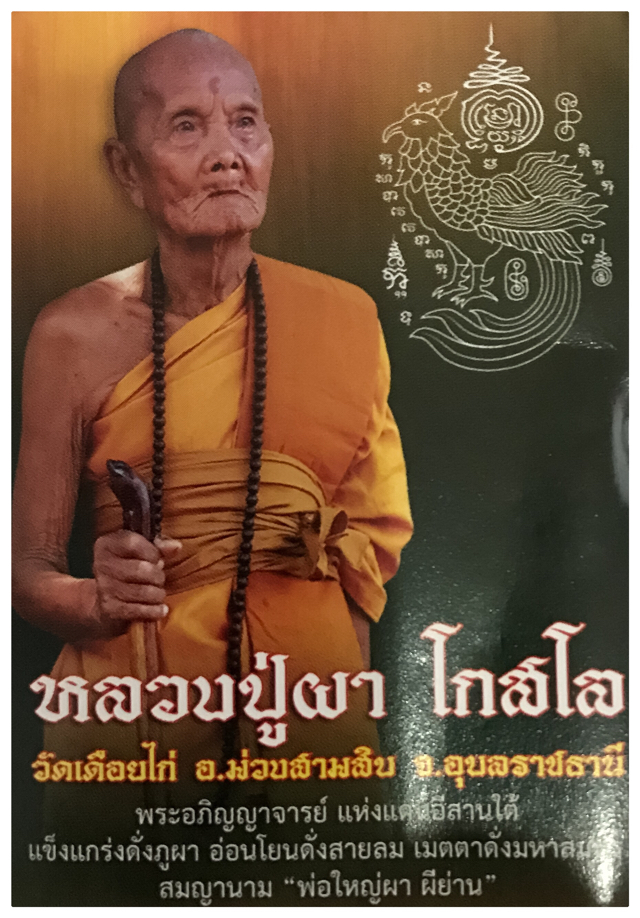
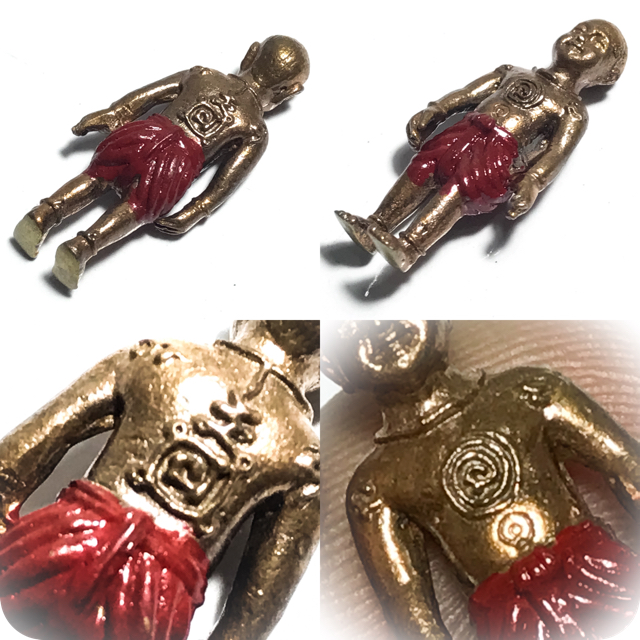
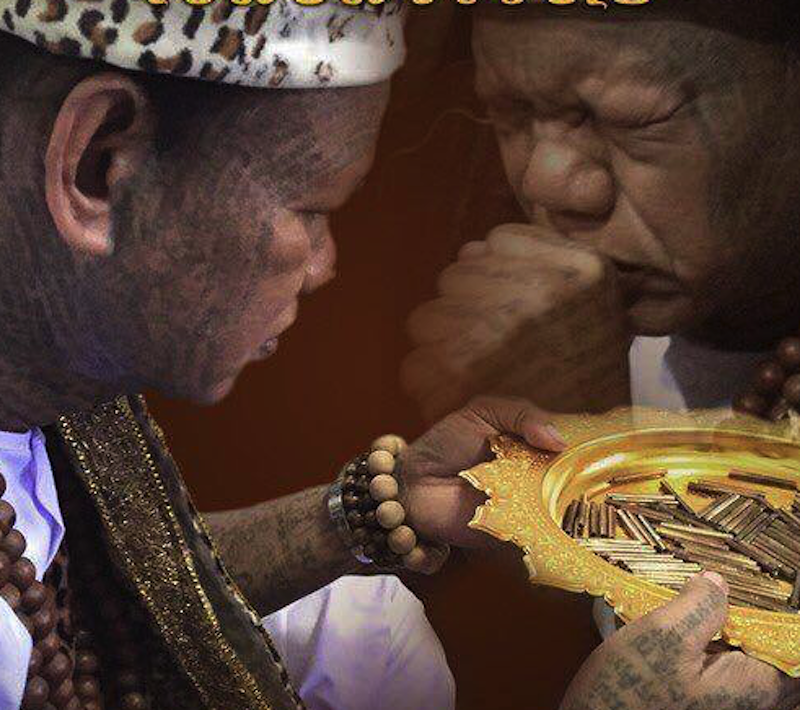
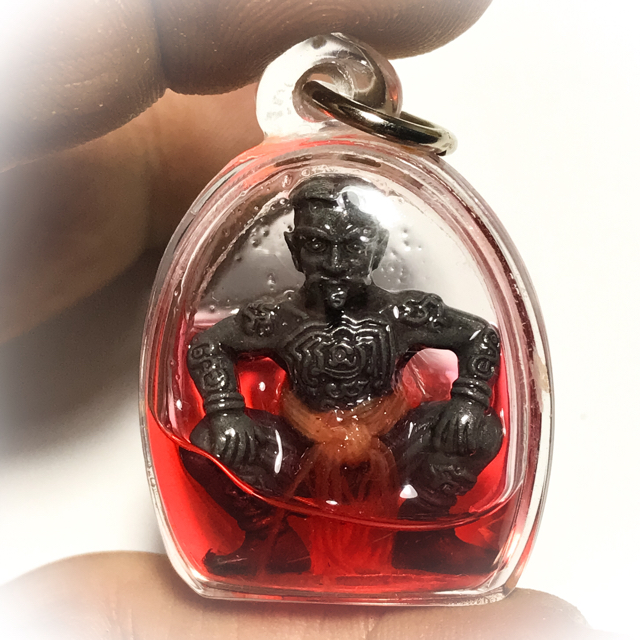
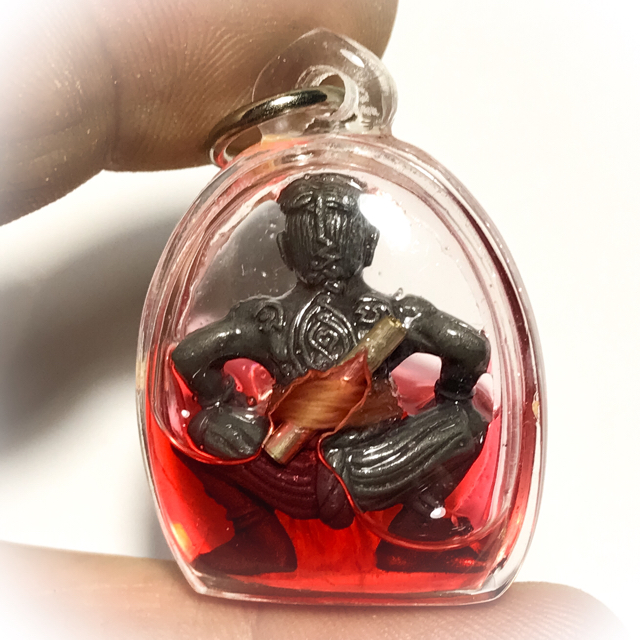
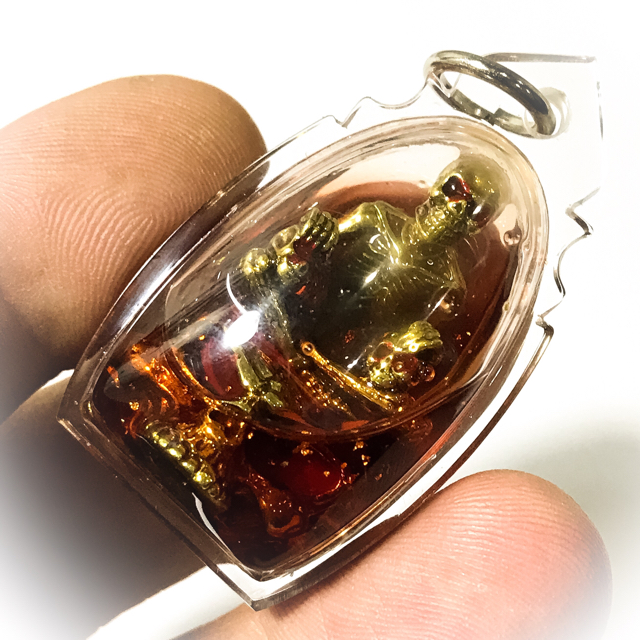
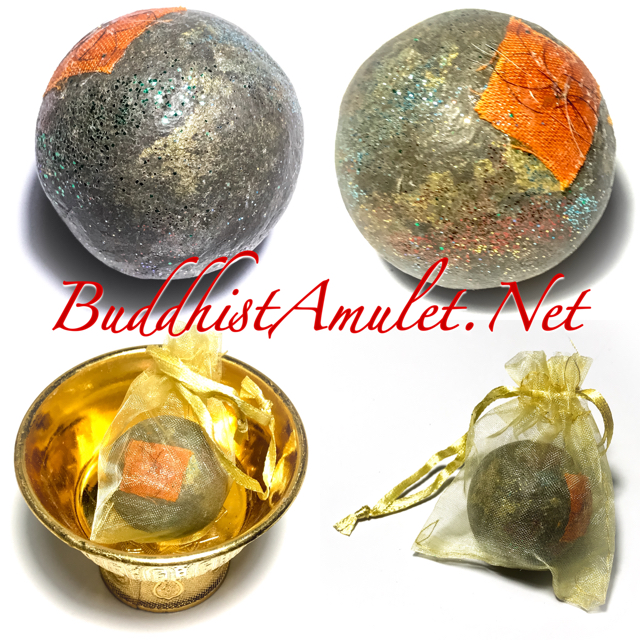
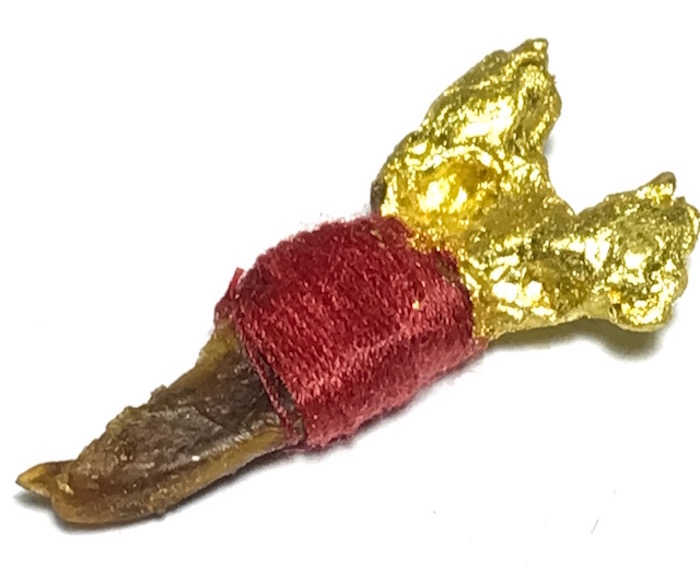
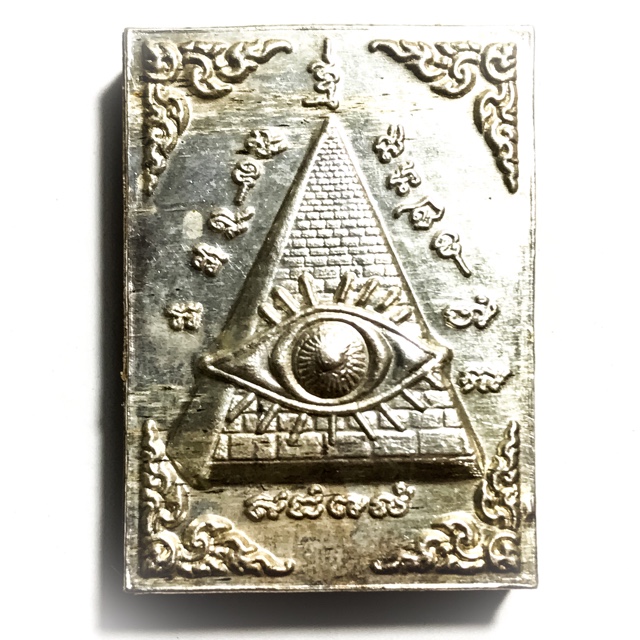
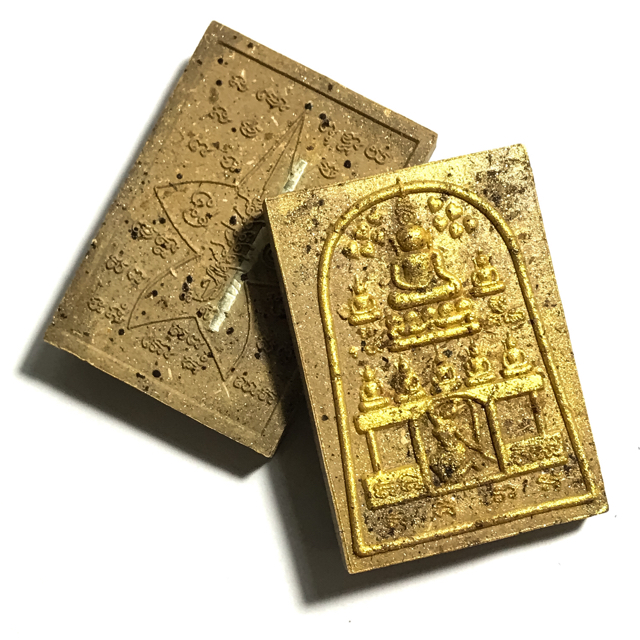
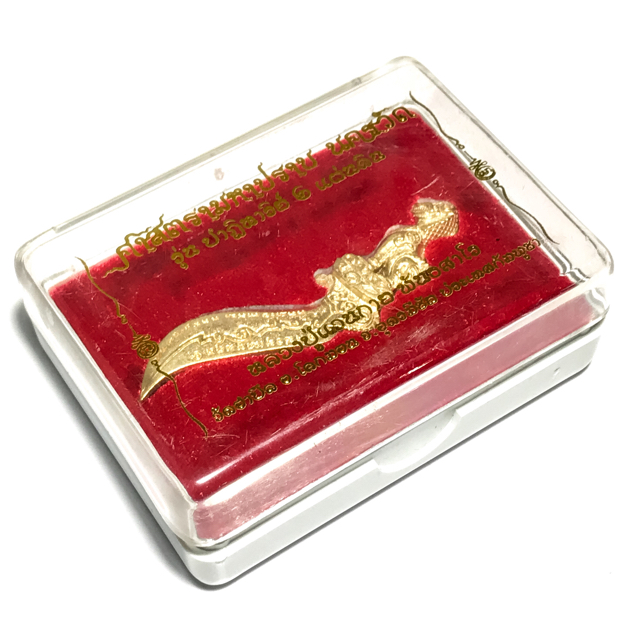
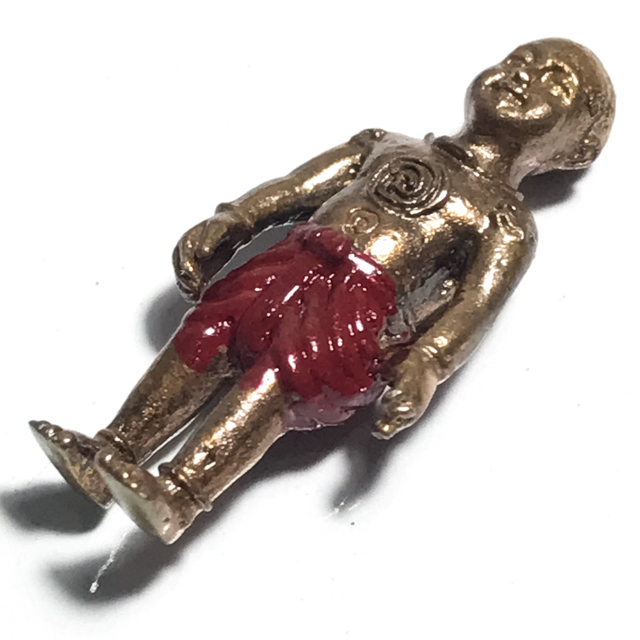
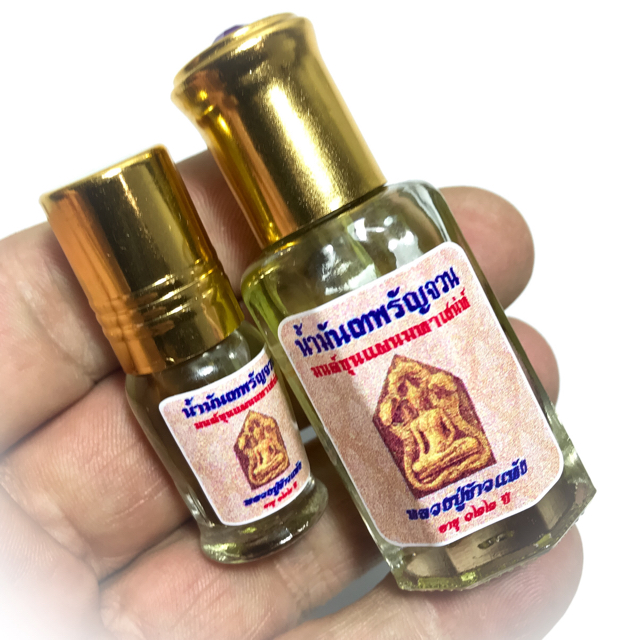
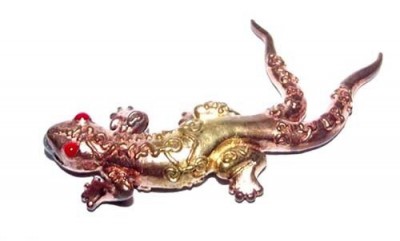
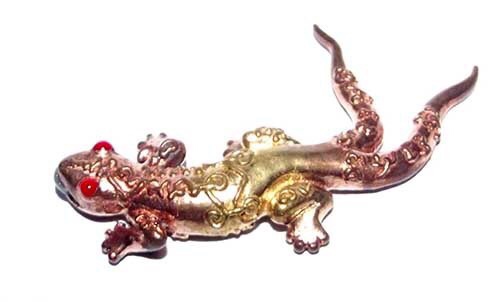
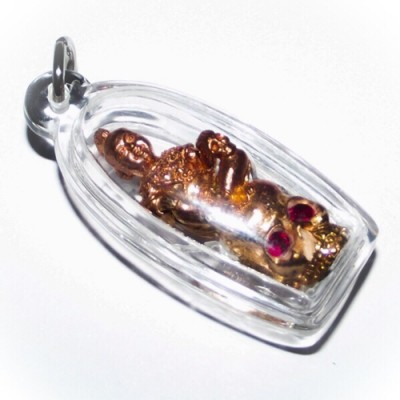
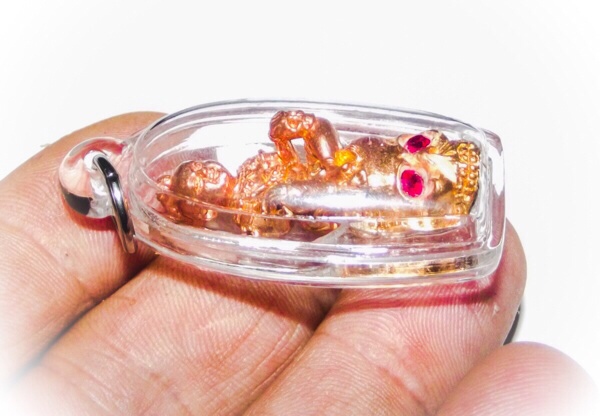
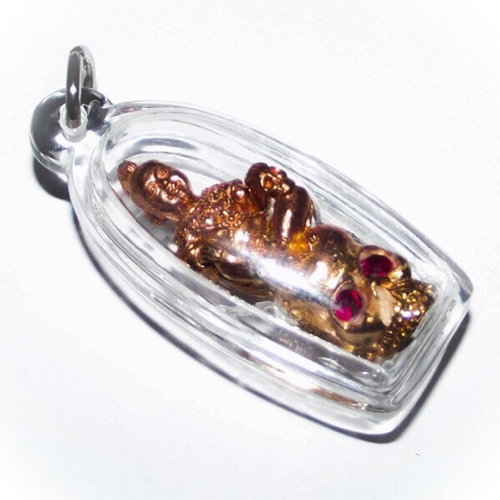
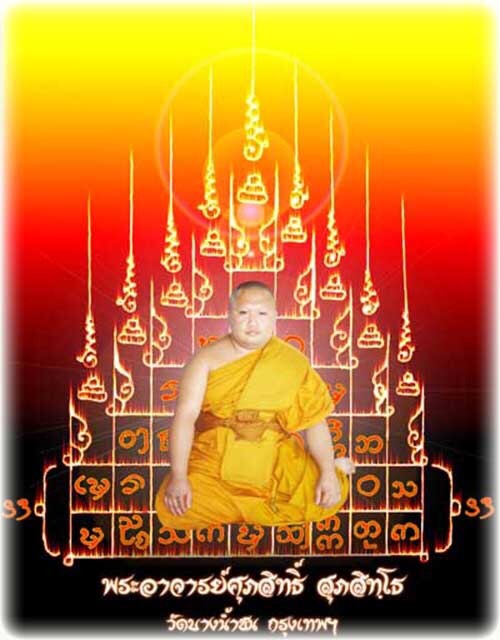
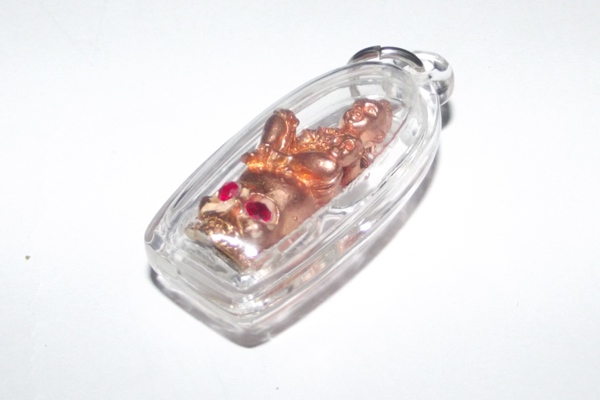
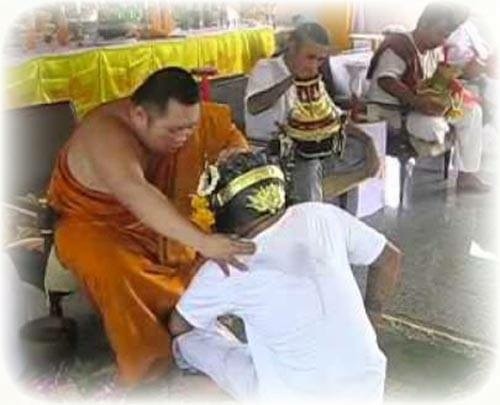 Kumarn Tong Jao Samrit – Golden Child with Prai Grasip Whispering Gambling Ghost of Hoeng Prai Deva.
Kumarn Tong Jao Samrit – Golden Child with Prai Grasip Whispering Gambling Ghost of Hoeng Prai Deva. 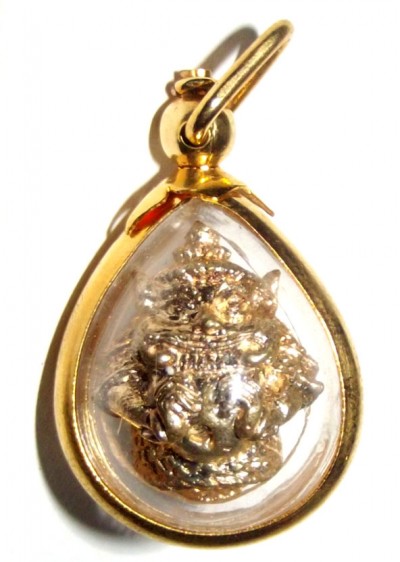








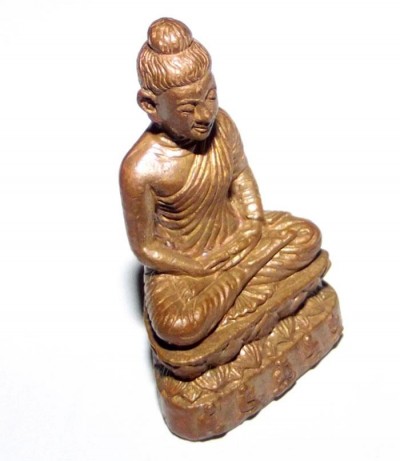





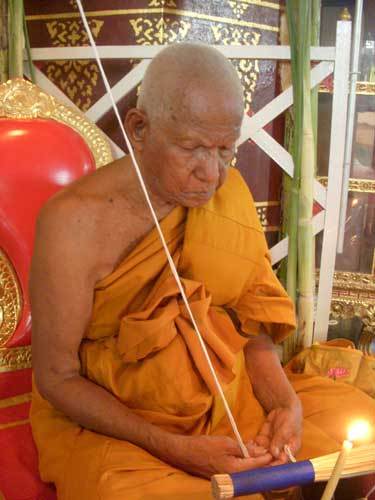
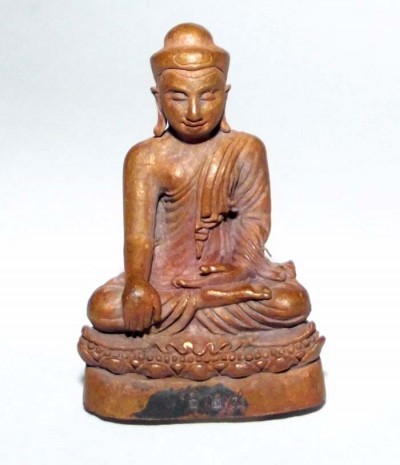




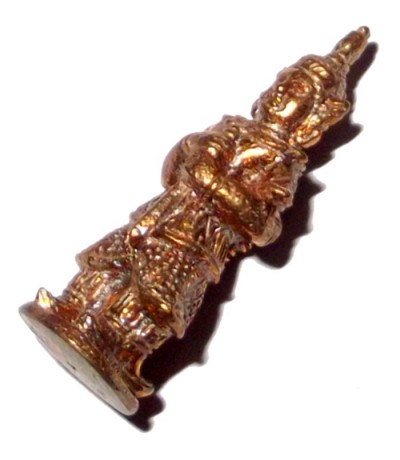





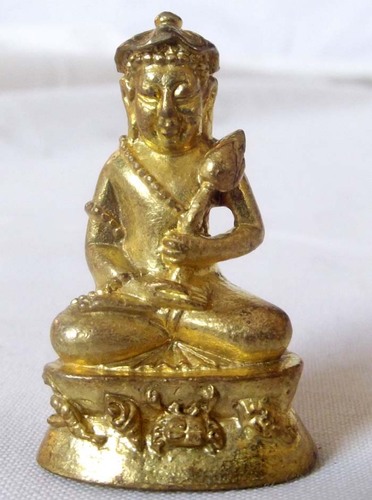


 The amulet comes with the original box from the temple of Wat Grern Gathin.
The amulet comes with the original box from the temple of Wat Grern Gathin.